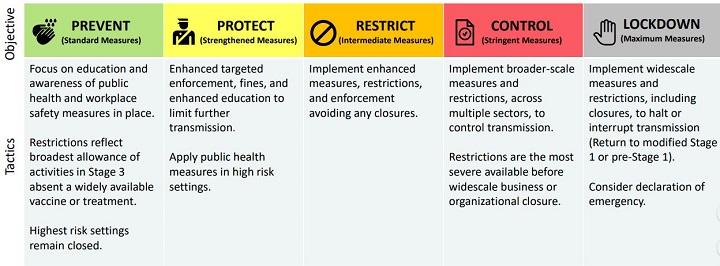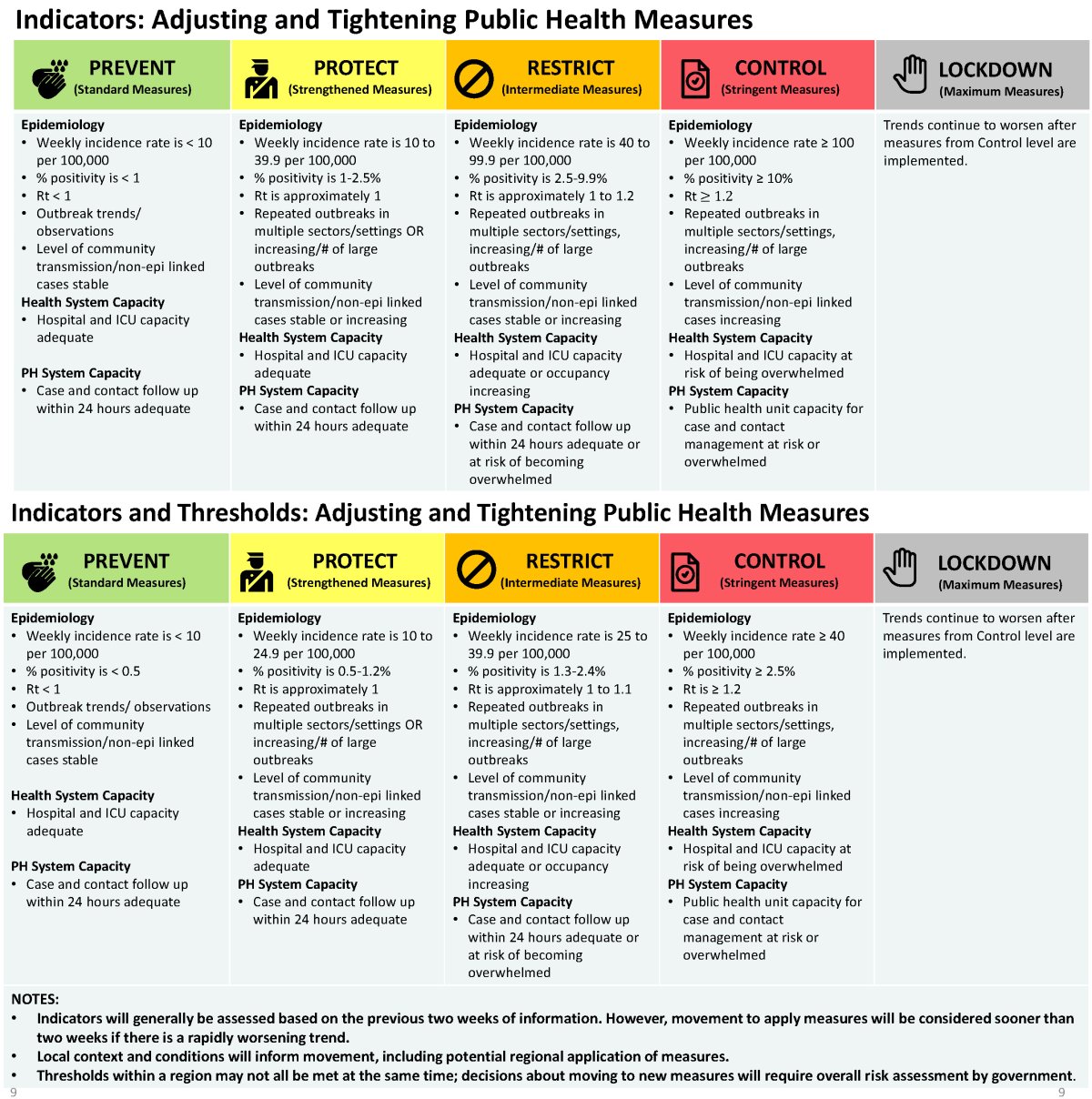Starting next week, the London and Middlesex region will shift from green-prevent to the more restrictive yellow-protect tier of the province’s recently unveiled colour-coded COVID-19 response framework.

The change, which will take effect at 12:01 a.m. Monday, comes after the province announced Friday that it would lower the framework‘s thresholds for imposing stricter measures in the wake of alarming new case projections and criticism over the framework’s original thresholds.
The projections, unveiled Thursday, found that the province is on track to see upwards of 6,000 new daily cases of the coronavirus by the middle of December.
The change also comes amid a surge in cases reported in London and Middlesex in recent weeks. The region has seen at least 180 cases since the start of the month and set a new single-day case record just this past Sunday.
“This is very serious, and that although the pandemic has been a challenge for us for a while now, it’s not over yet,” the region’s associate medical officer of health, Dr. Alex Summers, said in an interview Friday, praising the move to the yellow tier.
“The big message for folks is that this is serious. It’s not going away without the type of restrictions that we see across the province, and so it’s a very, very serious time that we need to take seriously.”
- Buzz kill? Gen Z less interested in coffee than older Canadians, survey shows
- ‘She gets to be 10’: Ontario child’s heart donated to girl the same age
- Bird flu risk to humans an ‘enormous concern,’ WHO says. Here’s what to know
- Canada updating sperm donor screening criteria for men who have sex with men
In addition to London and Middlesex, the amended thresholds will also mean that areas covered by Huron Perth Public Health, Southwestern Public Health and the Windsor-Essex County Health Unit will move from the least restrictive green-prevent to yellow.
Lambton Public Health will remain in the green tier.
In a statement, Dr. Joyce Lock, medical officer of health at Southwestern Public Health, said local officials there supported the change, noting it will add further protections to those in place in the region, which has seen more than 50 cases since the start of November.
Dr. Miriam Klassen, the medical officer of health for Huron and Perth, expressed a similar sentiment, and issued additional recommendations for local seniors’ homes that included more restrictions on visitors, and the ceasing of residents leaving for “short-stay absences and temporary absences” except for those required for health care.
To be moved to yellow, a region now has to, among other things, record a weekly incidence rate of 10 to 24.9 cases per 100,000 people and a per cent positivity rate of 0.5 to 1.2 per cent.
The province says assigned tiers will last for a minimum of 28 days, or two incubation periods, at which point the status of each region will be reassessed on a weekly basis.
“However, movement to a more restrictive zone will be considered sooner if there are rapidly worsening trends,” the province says.
Under the yellow tier, regions will see “strengthened measures” on top of the restrictions that have already been in place across the province, such as limits on the sizes of gatherings and requirements for the use of face coverings.
For the most part, the differences between the green and yellow tiers are largely around increased operational restrictions on bars and restaurants, sports and recreational facilities, personal care services, retail spaces and other businesses.
Bars and restaurants, for example, must now limit their operating hours and close at midnight, serve alcohol only between 9 a.m. and 11 p.m., require contact information for all seated patrons, limit groups sitting together to six people and limit the volume of music to be no louder than the volume of a normal conversation.
Locally, some measures, such as the six-person table limit and the obtaining of contact information, were already in place as part of a Section 22 order issued last month by the Middlesex-London Health Unit.
Measures for sports and recreation under the yellow tier include increasing the space between people to three metres “for areas of a sport or recreational facility where there are weights/weight machines and exercise/fitness classes,” and limiting recreation programs to 10 people per room indoors and 25 outdoors.
Again, some measures are similar to a separate Section 22 order the health unit issued.
The health unit has since released more details on the local impact of the yellow tier. The colour-coded framework can be read in full on the province’s website.
Local health officials have stated recently that the London and Middlesex region has been seeing increased transmission of the virus in indoor environments where people are maskless, not social distancing and around people not in their immediate household.
“It’s those activities that really need to be avoided right now. These types of restrictions do provide some degree of enforcement capacity there, however, the most important thing is that people take it to heart no matter what,” Summers said.
“In the spring, we all needed to play our part in order to limit transmission and that made a big impact on our day-to-day lives. What we have to do now is realize that COVID’s making a big impact on our day-to-day lives again, and we have to take a step back and keep our distance from one another.”
Health unit data shows that at least 109 of the 180 cases reported since the start of November — about 60.5 per cent — have resulted from close contact with a confirmed case, while about 50 per cent of cases since Nov. 1 have involved people under the age of 30.
“You should only have close contact with those in your immediate family. Other than that, unless you’re at work or school — and in those instances, you need to be wearing a mask and keeping distance as much as possible — you need to be having only close contact with your immediate family,” Summers said.
Under the revised thresholds, London and Middlesex could potentially be upgraded to the stricter orange-restrict tier if certain conditions are met.
Among the criteria is that the region record a weekly incidence rate of 25 to 39.9 per 100,000, a test per cent positivity rate of 1.3 to 2.4 per cent, repeated outbreaks in multiple sectors and settings, an increasing number of large outbreaks, and hospital and intensive care capacity that is seeing increasing occupancy.
In comparison, the original threshold for orange listed a weekly incidence rate of 40 to 99.9 per 100,000, and a per cent positivity rate of 2.5 to 9.9 per cent.
“The thing that would differentiate between us being in orange versus being in yellow is the number of cases that we are getting, as well as the number of positive tests that happen relative to the amount of tests that are completed,” Summers said, noting health officials will be watching local case rates closely over the next week.
“When we look at other jurisdictions, they have higher incident rates than we do, certainly, and as our incident rate climbs, if it does, we’ll have to consider working with the province to see if there’s additional restrictions that need to be put into place.”
— With files from Jacquelyn LeBel and The Canadian Press













Comments